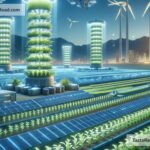The Future of Climate-Resilient Crops: Feeding the World in a Changing Climate
Climate change has become one of the biggest challenges facing the world today. Rising temperatures, unpredictable weather, and harsher growing conditions are threatening the food supply for billions of people. Farmers face new difficulties each year, such as droughts, floods, and pests—problems that make it harder to grow enough healthy crops to feed the population. But despite these challenges, science and technology offer hope through the development of climate-resilient crops. These innovative plants are designed to thrive even in extreme conditions, ensuring food security for the future.
What Are Climate-Resilient Crops?
Climate-resilient crops are plants bred or genetically modified to endure difficult weather and environmental conditions. They are designed to survive droughts, heavy rainfall, soil problems, pest outbreaks, and even rising temperatures. Scientists use advanced techniques like traditional crossbreeding and genetic engineering to strengthen the crops. These improvements can make plants grow faster, withstand bad weather, and resist diseases.
Imagine a type of rice that can grow underwater during extreme flooding or a strain of wheat that stays healthy even in scorching heatwaves. That’s the potential of climate-resilient crops—they can resist situations that would ruin other plants.
Why Do We Need Them?
The world’s population is expected to grow to nearly 10 billion people by 2050, which means the demand for food will increase significantly. At the same time, climate change is making it harder to grow crops. Many regions are already feeling the impact of shifting weather patterns. For example, prolonged droughts in Africa, floods in Southeast Asia, and rising temperatures in South America are disrupting agriculture.
Farmers are already struggling with reduced crop yields caused by these changes. If this continues, food shortages could become more common, leading to hunger and higher food prices. Climate-resilient crops offer a way to produce enough food despite these challenges.
How Are Climate-Resilient Crops Developed?
The development of climate-resilient crops involves science, technology, and hard work. Scientists study plants to identify genes that make them resistant to harsh conditions. For example, some plants in nature are naturally drought-tolerant or pest-resistant. Researchers use these plants as models to improve agricultural crops.
Here are some common methods used to create climate-resilient crops:
-
Selective Breeding: This traditional method involves choosing plants with desirable traits—such as resistance to heat or pests—and breeding them together over many generations. Over time, these traits become stronger, creating a variety of crops better suited to the new environment.
-
Genetic Engineering: Scientists use modern techniques to add or modify genes in crops. For instance, they might add a gene that helps a plant store more water during droughts or one that protects it from attacks by pests. This is faster and more precise than selective breeding.
-
CRISPR Technology: CRISPR is a cutting-edge tool that allows scientists to edit a plant’s DNA with incredible accuracy. Using this method, they can create crops that grow better in heat, resist diseases, or produce more food.
Examples of Climate-Resilient Crops
Several climate-resilient crops are already helping farmers around the world. Let’s look at a few examples:
-
Flood-Tolerant Rice: In Southeast Asia, there are varieties of rice that can survive underwater for up to two weeks. This is crucial for farmers in areas prone to flooding.
-
Drought-Resistant Corn (Maize): In Africa, scientists have developed corn varieties that can grow with very little water. These crops are helping farmers in dry regions continue to grow food.
-
Heat-Tolerant Wheat: Rising temperatures can reduce wheat yields, but heat-tolerant strains are helping farmers in warm climates keep production steady.
-
Disease-Resistant Bananas: Certain diseases threaten banana crops worldwide, but new varieties built to resist these diseases are allowing farmers to maintain their harvests.
Future Opportunities and Challenges
The future of climate-resilient crops is bright, but there are still challenges to overcome. New technologies will allow scientists to create even tougher crops, and advancements in artificial intelligence (AI) and big data will help farmers predict climate changes and adapt their farming methods. These innovations could make agriculture smarter and more efficient.
However, there are obstacles to address. Developing these crops takes time, money, and resources. Many farmers—especially small-scale farmers in developing countries—may struggle to afford these new seeds or access the technology. Additionally, there are concerns about the environmental impact of genetically modified organisms (GMOs) and how they might affect ecosystems over time. It’s also important to ensure that these innovations respect cultural values and adapt to local needs.
The Role of Governments and Communities
Governments, scientists, and communities will need to work together to ensure climate-resilient crops help everyone. Support programs to train farmers, fund research, and make seeds affordable are essential. Sharing knowledge across countries can help regions with similar challenges learn from each other. Community involvement is also crucial—local farmers must be part of the conversation to ensure solutions meet their needs.
Conclusion
Climate-resilient crops are a powerful tool to protect our food supply in the face of climate change. They offer hope for a world where unpredictable weather won’t lead to hunger or crop failures. While challenges remain, innovations in science, technology, and collaboration can help overcome them. By investing in climate-resilient crops today, we can work toward a more sustainable and food secure future for generations to come.


